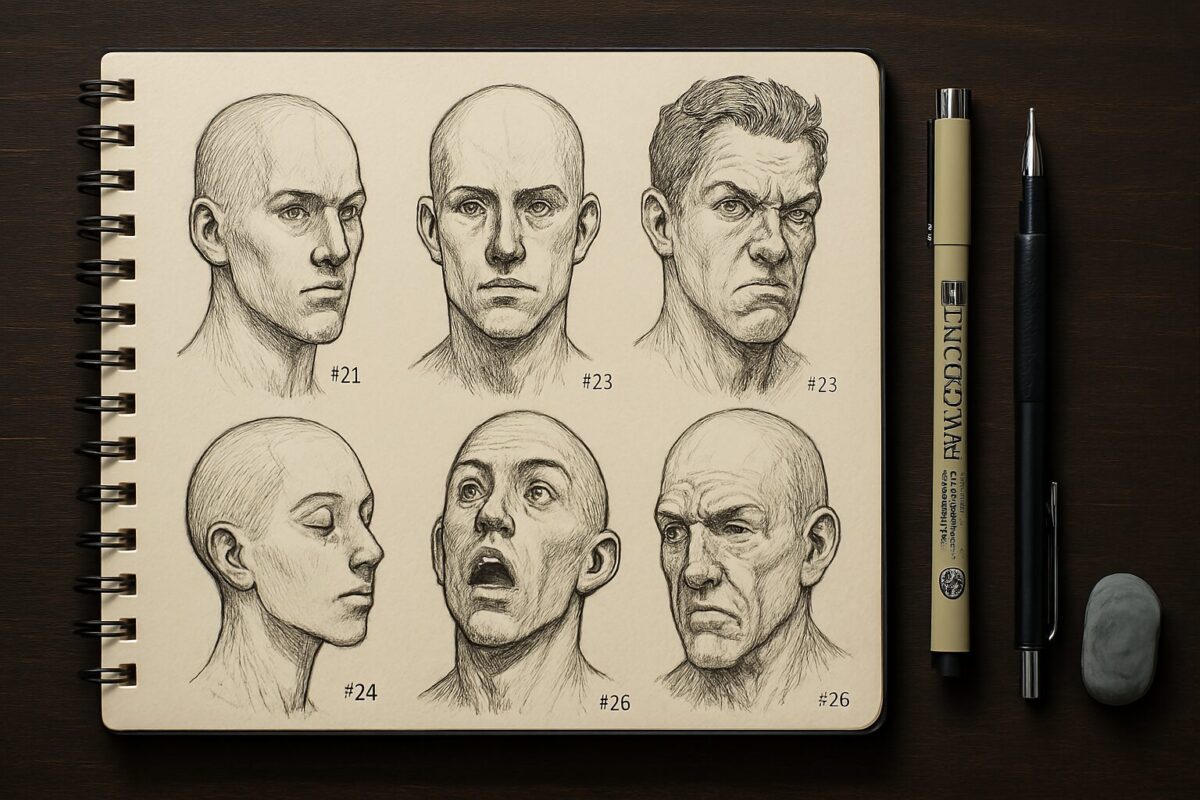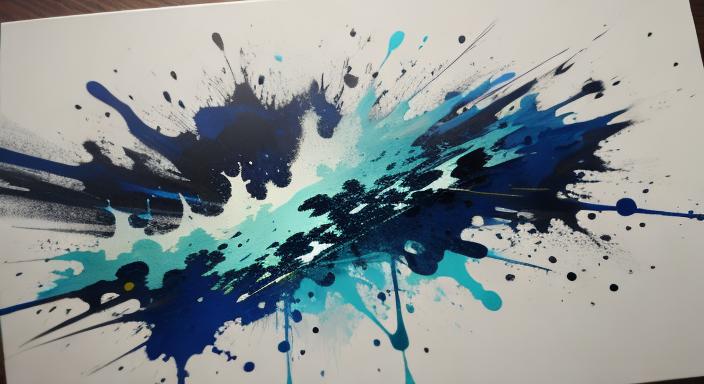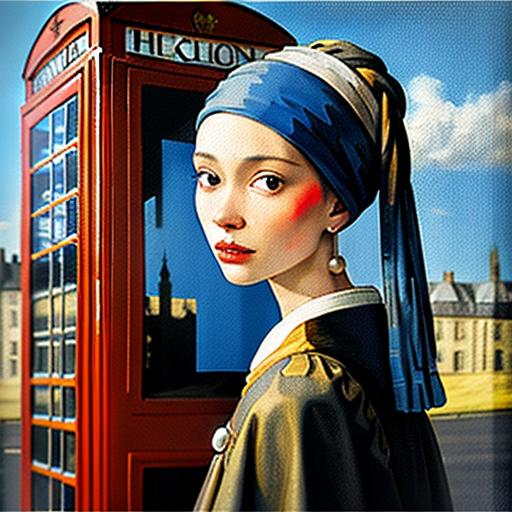Art challenges are a cornerstone of the online creative community. They’re fun, they build daily habits, and they connect us with fellow artists. But what if a challenge could be more than just a fun daily exercise? What if it could be a powerful, strategic tool to accelerate your artistic career?
By choosing your art challenges for specific goals, you can transform them from simple creative workouts into targeted training programs. Whether you’re trying to land your first client, find that elusive unique style, or simply master a tricky fundamental skill, there’s a challenge designed to get you there.
This guide moves beyond generic lists and provides specific recommendations for artists who are using challenges with a purpose.
Goal 1: Building a Killer Portfolio
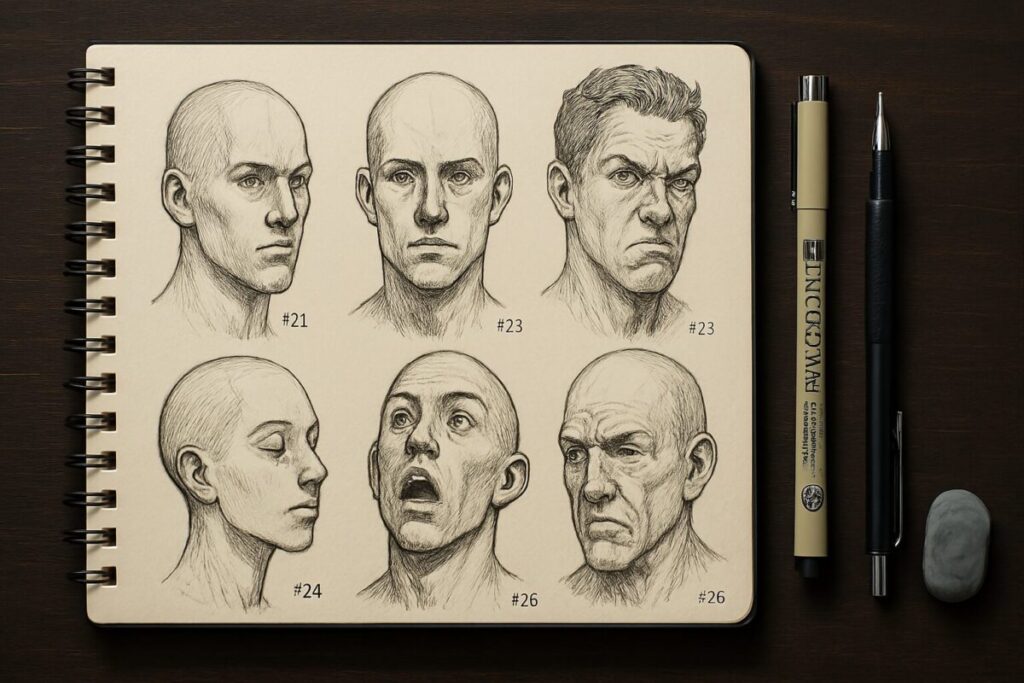
A strong portfolio isn’t just a collection of your best random drawings; it’s a curated showcase of your skills, consistency, and professional focus. The right challenge can help you generate a cohesive body of work that demonstrates exactly what clients or studios are looking for.
- The 100 Heads Challenge: A legendary challenge for a reason. Committing to drawing 100 portraits over a set period forces you to rapidly improve your understanding of facial anatomy, structure, and lighting. It’s perfect for: Aspiring portrait artists and character designers who need to prove their proficiency and consistency in drawing faces.
- A Month of Character Design: Invent your own challenge, such as “30 Days of Fantasy Heroes” or “30 Days of Sci-Fi Villains.” By the end, you’ll have a full roster of original characters designed from the ground up. It’s perfect for: Future concept artists, illustrators, and game designers who need to show their ability to think creatively and produce a range of related designs.
- The Cohesive Illustration Series: Challenge yourself to create 15-30 illustrations all within a single, consistent style. Pick a theme, like “Mythical Creatures,” “Local Cafe Scenes,” or “Book Cover Redesigns.” It’s perfect for: Illustrators targeting publishing, editorial, or branding work, as it proves you can deliver a suite of professional, stylistically consistent images.
Goal 2: Discovering Your Unique Style
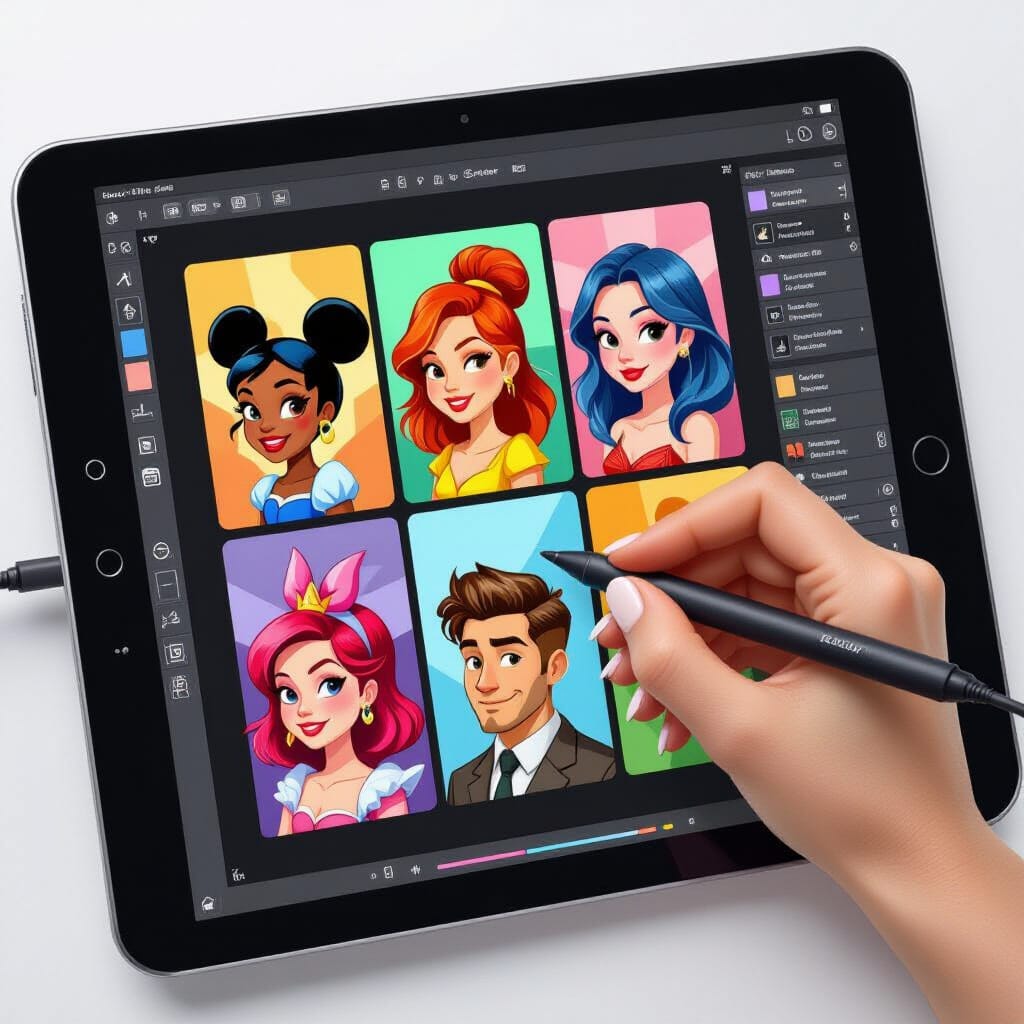
“How do I find my style?” is one of the most common questions an artist asks. Style isn’t something you find; it’s something you build by absorbing influences, experimenting, and understanding your own creative voice. These challenges are designed to accelerate that process of discovery.
- The 20 Art Styles Challenge: This viral challenge involves drawing the same character (often a self-portrait or a favorite character) in 20 different, distinct artistic styles (e.g., Tim Burton, Studio Ghibli, Art Nouveau, etc.). By “trying on” different styles, you learn what you enjoy and what feels natural. It’s perfect for: Artists who feel creatively “stuck” and want to break out of a rut by exploring a wide range of visual languages.
- The Master Study Challenge: A timeless practice for artists. Challenge yourself to recreate the works of artists you admire, from the Old Masters to contemporary illustrators. The goal isn’t to copy, but to deconstruct—to understand their use of colour, composition, and brushwork. It’s perfect for: Any artist looking to deepen their technical knowledge and intentionally incorporate proven techniques into their own emerging style.
Goal 3: Mastering the Fundamentals
Style and concepts are built upon a foundation of skill. No matter how advanced you become, dedicating time to the fundamentals is crucial for growth. These challenges strip away complexity and allow you to focus on one core artistic principle at a time.
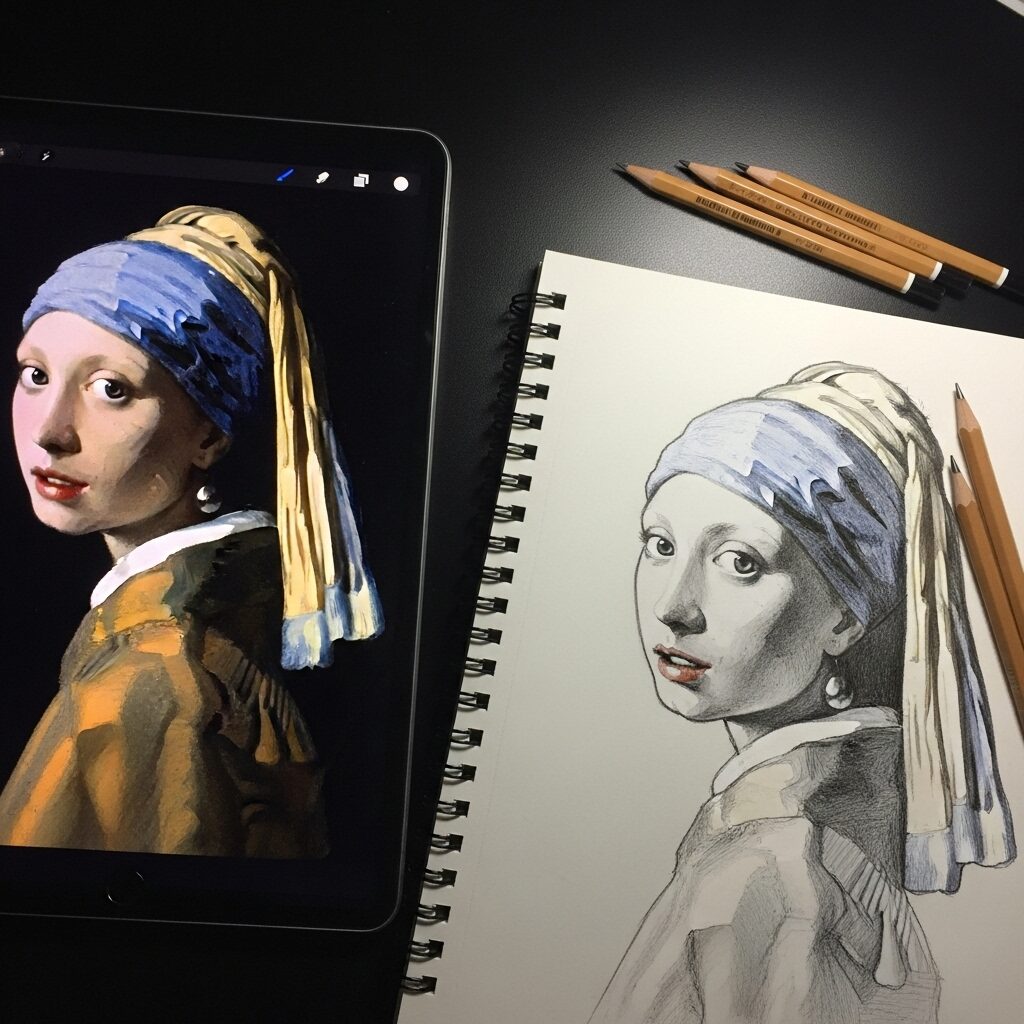
- Medium-Specific Challenges (e.g., World Watercolor Month): By committing to a single medium for 30 days, you dramatically speed up your learning curve. You’ll learn its unique properties, limitations, and tricks in a way that sporadic use never allows. It’s perfect for: Artists wanting to master a new material (like gouache, ink, or digital painting) or deepen their expertise in a familiar one.
- The Composition Challenge: Create your own 30-day challenge where every piece is an exploration of a different compositional principle (e.g., Rule of Thirds, Golden Ratio, Asymmetry, Framing). You can use simple shapes or abstract forms. It’s perfect for: Artists of all levels who want to strengthen the underlying structure and visual flow of their images.
- The Colour Study Challenge: Dedicate a month to exploring colour theory. Each day, tackle a new concept: complementary colours, analogous palettes, split-complementary, creating mood with colour, etc. It’s perfect for: Any artist who wants to move beyond guesswork and use colour with confidence and intention.
By aligning your creative play with your professional goals, every sketch and every challenge becomes a deliberate step forward. The next time you decide to start a challenge, ask yourself first: “What do I want to achieve?”
For more ideas, check out our Ultimate List of Fun Art Challenges, or if you’re feeling ambitious, learn how to Create Your Own Art Challenge tailored perfectly to your goals. If you need more inspiration Unlock Your Inner Artist: A Guide to Daily Drawing Prompts
FAQs: Art Challenges for Specific Goals
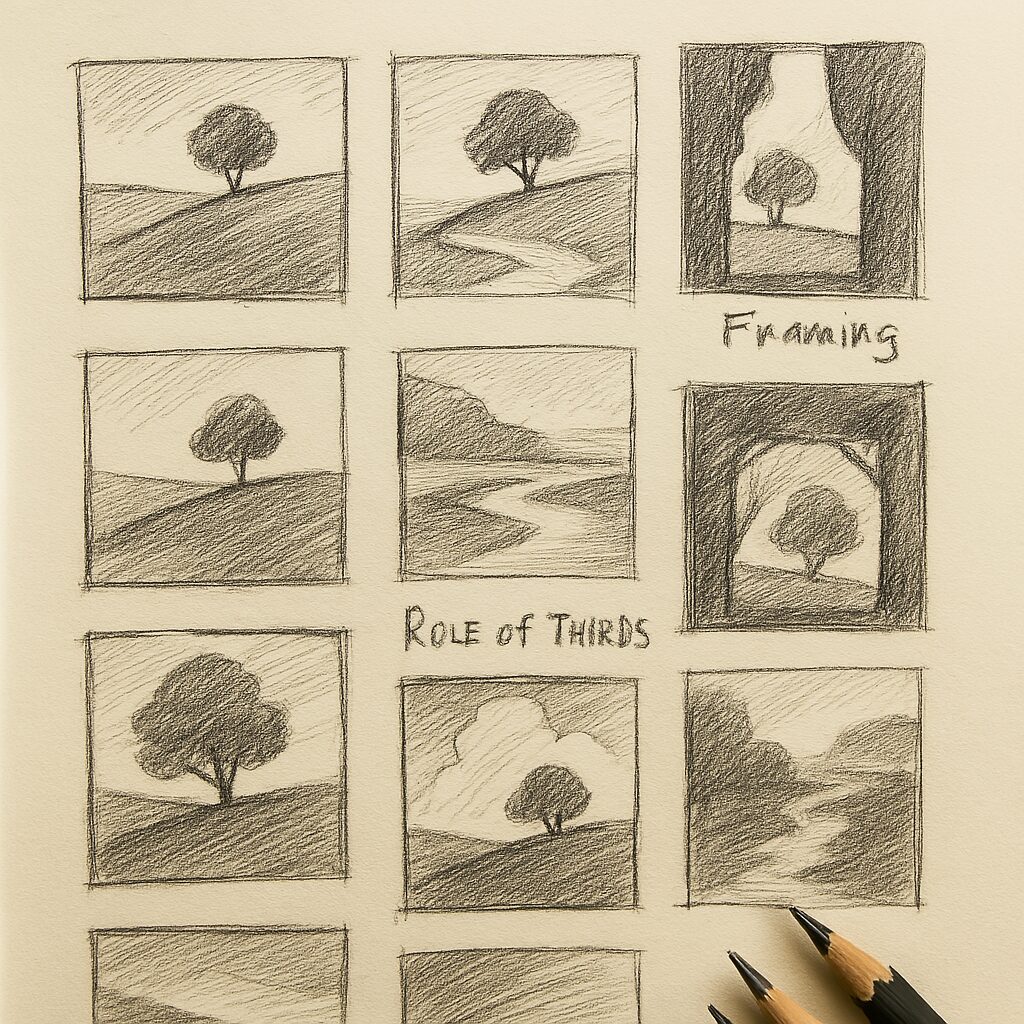
1. How do you manage a large-scale challenge like “100 Heads” without burning out? The key is to break it down and focus on the process, not perfection. Don’t try to draw 100 perfect portraits. Instead, set a manageable goal, like 2-3 heads per day. Use a timer (e.g., 15-20 minutes per head) to keep yourself from overworking a single piece. The goal is mileage and learning, not creating a masterpiece every single time.
2. How can I track my progress to know if a challenge is actually working? Tracking is essential. Before you start, create a “Day 0” piece of artwork related to your goal. For instance, if you’re starting a composition challenge, draw a complex scene. As you go, date every piece of work. At the end of the challenge, redraw your “Day 0” piece using the same prompt. The “before and after” comparison will provide clear, motivating evidence of your improvement.
3. I finished a portfolio-building challenge. Do I put all 100 drawings in my portfolio? No, a portfolio is about curation, not volume. Do not upload all 100 pieces. Instead, select the very best 10-15 pieces that showcase your skill and consistency. Present them together as a dedicated project titled something like “100 Heads Challenge – Study of Form and Light.” This shows discipline and the ability to self-edit, which are highly valued professional skills.
4. Can I combine goals within a single art challenge? Absolutely. This is a highly efficient way to work. For example, you could combine all three goals: undertake a Master Study Challenge (Style Development) where you specifically analyse how an artist you admire handles anatomy (Foundational Skills), and then apply those learnings to a series of 10 original character illustrations (Portfolio Building).
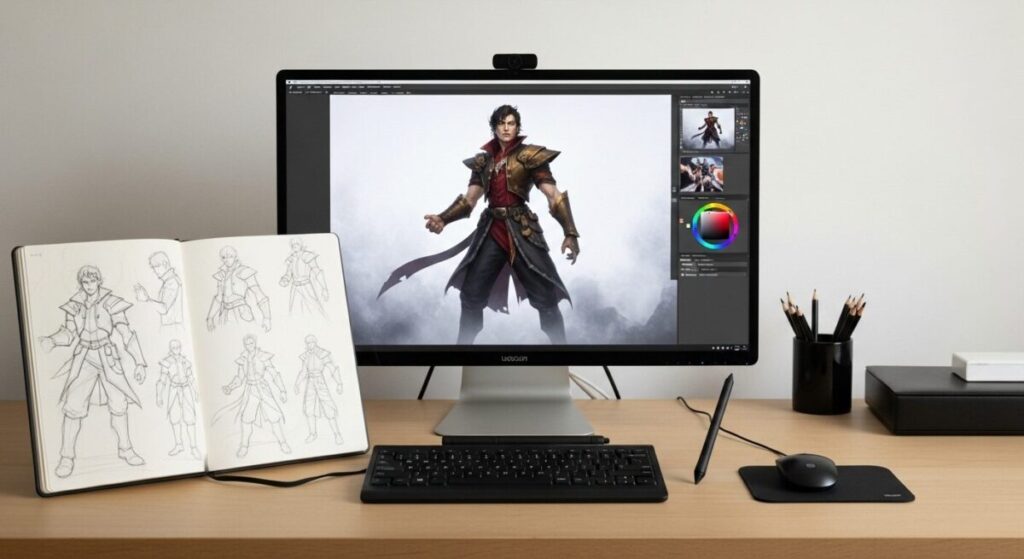
Additional Resources for the Serious Artist
These resources are focused on professional development, providing the tools and communities to help you achieve your artistic goals.
- Professional Portfolio Platforms:
- ArtStation: The industry-standard portfolio site for artists in gaming, film, and entertainment. Essential for concept artists and character designers.
- Behance: An excellent platform from Adobe for all types of visual professionals, from graphic designers to illustrators, to showcase curated projects.
- High-Quality Reference & Learning Tools:
- Proko: Offers some of the best online tutorials for learning anatomy, figure drawing, and portraiture, taught by industry professionals.
- Sketchfab: An incredible resource for viewing 3D models of objects, anatomy, and scenes from any angle, providing unparalleled reference for your studies.
- Google Arts & Culture: Explore museums and artworks from around the world in ultra-high resolution. It’s an invaluable free resource for conducting master studies.
- Artist Communities & Forums:
- Cubebrush Forums: A popular online forum where amateur and professional artists share work, ask for critiques, and discuss art-related topics in a serious manner.
- Schoolism: While it is a paid subscription service, the quality of instruction from legendary artists (like Iain McCaig and Terryl Whitlatch) is unparalleled for those truly serious about foundational skill improvement.

